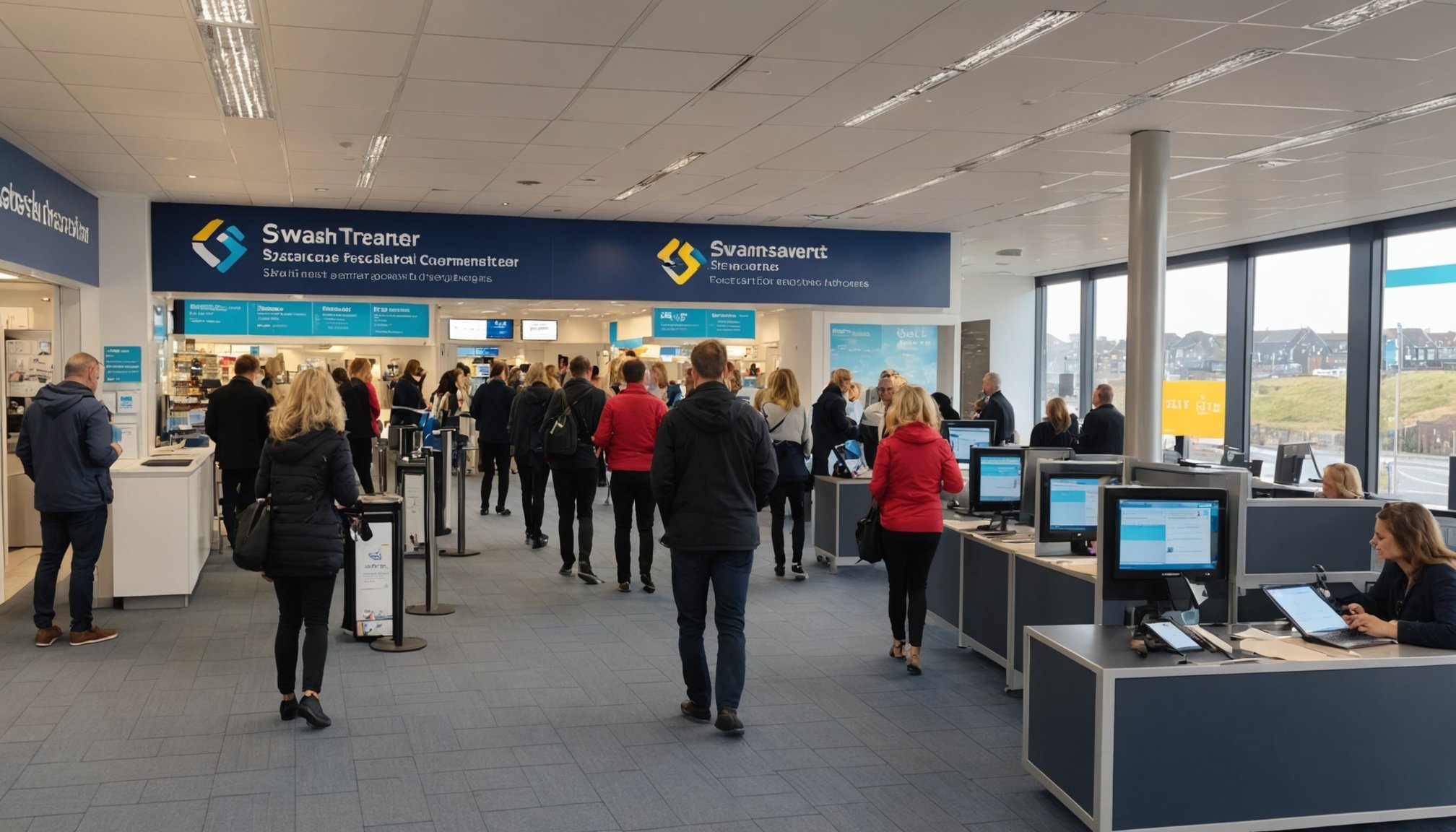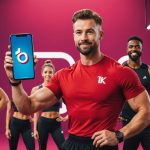Unlocking Market Potential: Innovative Data-Driven Customer Segmentation Techniques for Swansea Travel Agencies
In the vibrant city of Swansea, travel agencies are constantly seeking ways to enhance their market presence and attract a diverse range of customers. One of the most effective strategies to achieve this is through innovative data-driven customer segmentation. This approach allows travel agencies to tailor their services and marketing efforts to specific groups of customers, thereby increasing engagement, loyalty, and ultimately, revenue.
Understanding Customer Segmentation
Customer segmentation is the process of dividing a customer base into distinct groups based on various characteristics. This can include demographic, psychographic, behavioral, and geographic factors. Here’s a breakdown of how these types of segmentation can be applied:
Also read : Unlocking Insights: Leveraging Data Visualization for Groundbreaking Research at an Oxford Institute
Demographic Segmentation
Demographic segmentation involves categorizing customers based on demographic factors such as age, gender, income level, and family status. For a Swansea travel agency, this could mean targeting families with young children for family-friendly vacation packages or focusing on retirees for leisurely cruises.
Example:
- A travel agency in Swansea might offer special family packages during school holidays, including kid-friendly activities and accommodations. This is tailored to families with children, a specific demographic segment[2].
Psychographic Segmentation
Psychographic segmentation delves into the lifestyle choices, preferences, and attitudes of customers. This helps in understanding why certain customers behave in certain ways.
Example:
- A travel agency could target adventure-seekers with rugged outdoor packages, while promoting luxury vacations to customers who value comfort and style. This approach ensures that marketing messages resonate with the unique psychographic profiles of each segment[2].
Behavioral Segmentation
Behavioral segmentation groups customers based on their interactions with the brand, purchase history, and other behavioral attributes. This is particularly useful for travel agencies as it helps in identifying high-value customers and tailoring marketing efforts accordingly.
Lifecycle Stage Segmentation
This type of segmentation categorizes customers based on their stage in the customer journey, from awareness to loyalty.
Example:
- A travel agency might send introductory offers to new customers, while offering loyalty rewards and exclusive deals to long-term customers. This ensures continuous engagement at every stage of the customer lifecycle[1].
Engagement Segmentation
Engagement segmentation groups customers based on their interaction levels with the brand.
Example:
- Highly engaged users could be targeted with premium content and special offers, while occasional users might receive reminders and incentives to increase their engagement[1].
Geographic and Geospatial Segmentation
Geographic segmentation focuses on customers in specific locations or regions. For Swansea travel agencies, this could involve targeting local residents or tourists visiting the area.
Using Geospatial Data
Geospatial data, such as that provided by the Ordnance Survey, can be invaluable in understanding the spatial distribution of customers and their travel patterns.
Example:
- A travel agency could use geospatial data to identify popular tourist spots in and around Swansea and tailor their packages accordingly. This could include offering guided tours or special deals for attractions in these areas.
| Segmentation Type | Description | Example |
|---|---|---|
| Demographic | Age, gender, income level, family status | Family packages during school holidays |
| Psychographic | Lifestyle choices, preferences, attitudes | Adventure packages for thrill-seekers |
| Behavioral | Purchase history, interaction levels | Loyalty rewards for long-term customers |
| Geographic | Specific locations or regions | Targeting local residents in Swansea |
Leveraging Data for Segmentation
In today’s digital economy, vast amounts of data are available to help travel agencies in Swansea make informed decisions.
Surveys and Customer Feedback
Surveys are a powerful tool for gathering zero-party data that can reveal valuable insights about customers.
Example:
- A travel agency could use surveys to gauge customer experience, identify issues, and understand expectations. This data can be collected through dedicated survey tools like Qualaroo and used to segment customers based on their feedback[3].
Customer Management Systems (CMS)
A CMS can provide detailed data on customer interactions, purchase history, and lifetime value.
Example:
- Using a CMS, a travel agency can create value-based and behavioral segments. For instance, identifying high-value customers and tailoring marketing efforts to retain them[3].
Behavioral Data
Behavioral data helps in understanding customer actions and preferences.
Example:
- By analyzing behavioral data, a travel agency can recognize loyal customers and reward them with exclusive perks, while enticing first-time visitors with special offers. This precision in approach increases engagement and maximizes ROI[5].
Real-Time Data and Public Sector Collaboration
Real-time data can significantly improve decision-making in the travel sector.
Collaboration with the Public Sector
Collaboration with the public sector, especially in areas like social care and economic development, can provide valuable insights.
Example:
- Working with local authorities in Swansea, a travel agency could gain access to data on tourist trends and economic indicators, helping them to tailor their services to meet the needs of both local residents and tourists.
Case Study: Hertz’s Segmentation Strategy
Hertz, a well-known car rental company, provides a compelling example of how segmentation can be effectively used in the travel industry.
Demographic, Psychographic, and Behavioral Segmentation
Hertz employs a combination of demographic, psychographic, and behavioral segmentation to refine its target audience.
Quote:
“Hertz’s ability to segment its target audience and tailor its marketing messages is critical for building customer relationships and driving business growth. By understanding the distinct needs and preferences of different customer segments, Hertz can deliver personalized, compelling messages that resonate with each group, ultimately enhancing customer engagement and loyalty.”[2]
Practical Tips for Swansea Travel Agencies
Here are some practical tips for Swansea travel agencies looking to implement data-driven customer segmentation:
Start Small and Refine
Begin with basic segmentation and gradually refine your categories as you gather more insights.
Example:
- Start by segmenting customers based on demographic factors like age and income level. As more data becomes available, refine these segments to include psychographic and behavioral attributes.
Use Multiple Data Sources
Combine data from various sources such as surveys, CMS, and social media to get a comprehensive view of your customers.
Example:
- Use surveys to understand customer preferences, CMS data to analyze purchase history, and social media analytics to track engagement patterns.
Personalize Marketing Efforts
Craft personalized campaigns tailored to each segment.
Example:
- For loyal customers, offer early access to new packages or loyalty rewards. For first-time buyers, provide welcome discounts. For occasional shoppers, send reminders about time-sensitive deals or seasonal promotions[5].
The Role of Technology in Segmentation
Technology plays a crucial role in facilitating data-driven customer segmentation.
Autonomous Vehicles and Smart Contact Management
Even though autonomous vehicles might seem unrelated, the technology behind them can inspire innovative data management systems.
Example:
- Salesmate CRM offers features like smart contact management and behavior-based email campaigns, allowing travel agencies to organize customers into actionable segments based on behavioral attributes[5].
Open Source and Digital Tools
Open-source tools and digital platforms can help in optimizing website and marketing materials for different devices and operating systems.
Example:
- Identify whether your customers primarily use smartphones, laptops, or tablets, and optimize your website and marketing materials accordingly. This ensures a seamless experience across different platforms[3].
Economic and Social Impact
Effective customer segmentation can have a significant economic and social impact on the travel sector in Swansea.
Economic Benefits
By targeting the right segments, travel agencies can improve their revenue and contribute to the local economy.
Example:
- Targeting high-value customers with personalized offers can increase customer loyalty and retention, leading to higher revenue and economic growth for the agency and the local community.
Social Benefits
Segmentation can also help in addressing social needs and preferences.
Example:
- A travel agency could target environmentally conscious customers with eco-friendly vacation packages, promoting sustainable tourism and contributing to social care initiatives in the community.
In conclusion, data-driven customer segmentation is a powerful tool for Swansea travel agencies looking to unlock their market potential. By understanding and leveraging various types of segmentation, using real-time data, and collaborating with the public sector, these agencies can create highly personalized and engaging offers that resonate with their customers.
Quote:
“By employing techniques such as personalization, emotional appeal, and value proposition, travel agencies can create compelling marketing campaigns that resonate with customers and drive engagement. By understanding their target audience and delivering tailored messages, they can solidify their position as preferred choices in the travel industry.”[2]
As the digital economy continues to evolve, the use of innovative data-driven customer segmentation techniques will become increasingly crucial for travel agencies in Swansea to stay competitive and meet the diverse needs of their customers. By embracing these strategies, they can not only improve their market presence but also contribute positively to the economic and social fabric of the community.











